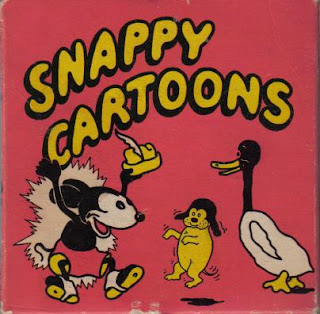
A brief history, if you may. Paul Terry completes his very first cartoon, "LITTLE HERMAN", in 1915. A distributor tells him that he would have paid more for the raw film stock before Paul drew his cartoon images on it. In 1916, Terry is discovered by the Bray Studios and completes 12 Farmer Al Falfa cartoons; the beginning of a legacy. 1917 sees further Farmer Al Falfa releases with Conquest Pictures, an Edison Company. After the first World War, Terry partners with Amadee Van Beuren to form Aesop's Film Fables in 1921. Over the course of 9 years, Terry would produce some 420 Aesop's Fables cartoons, some starring the Farmer and all starring millions of countless animals. Though brain fog persists, I want to say that Terry churned out these cartoons every week...an amazing feat for a single series. This accomplishment and its follow-up in decades to come is what we will focus on in this post.

Coinciding with what this blog usually focuses on, up for discussion is the reissuing of these Fable cartoons. Concurrently, it seemed, various Fables were available in America and overseas on 9.5mm offered by Pathe (the films' distributor) for home use. Almost immediately during the 1920s, Kodascope Libraries offered a dozen or so Fables cartoon as part of their 16mm rental libraries. As some of you may or may not know, Kodascope was the Blockbuster Video of the 1920s; a major library where individuals could rent (and possibly buy?) films for home exhibition. As the film cans stated, "Rental Charged for Each Day Held Whether Used Or Not". Kodascope Libraries lasted into the 1940s and so did this small handful of Fables. In-between that period, Pathe also offered many Fables in abbreviated and complete 16mm prints as part of their Pathegrams Home Movie line. Here and there, some Fables were also butchered by the low-end home movie companies like Irwin Safety Film.

The big "Hurrah" for Fables in the 1940s would be their surfacing under two new series titles. Snappy Cartoons, a Sterling Films release, were Fables with new main titles and intertitles with added music offered on 16mm, as well as standard 8mm. Some speculate that the Fabletoons series was a theatrical reissue although it has been unconfirmed. Both types of prints would wind up on television in subsequent years.

The unavoidable new medium, television, would emerge soon thereafter. Since old silent and early sound film was viewed as saleable product for filling in time slots in early broadcasting, the Fables would also see much exposure on television in the early 1950s. Due to the sheer number of pre-existing Fables, as you can imagine, the distribution rights would be split among a handful of different TV distributors. Sterling Television used the Snappy Cartoons prints as previously mentioned. There was also Commonwealth (who also handled many Van Beuren cartoons at this point) as well as Guaranteed Productions and Stuart Productions (these two, probably one and the same, also carried Out of the Inkwell shorts.) Last but not least, there would be the occasional bootleg print of a Fable turning up.

In the 1960s, color television was becoming the standard and old black and white content was deemed useless. In this period we see a heightened availability of 8mm Carnival Films prints of Fables. Although these have cheerful and collectible packaging, they are fearlessly low-quality dupes of older Snappy Cartoons 8mm prints and often suffer great quality loss. That, my friends, is the end of the Fables until casual VHS and DVD collections came along (cough, cough). Hope you enjoyed the visuals as well.






